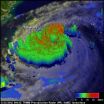(Press-News.org) There are many reasons why it is important to be able to identify farm animals, horses and small companion animals. Unique identification marks are essential for ensuring the correctness of breeding programmes, for preventing the spread of disease and for eliminating the possibility of deceit in competitions or when animals are sold. The traditional method of marking larger farm animals relies on branding with hot irons or on ear-tagging but this is deemed inappropriate for use on dogs and cats, which are identified by the implant of a microchip transponder. Until recently, horses were generally branded but following concerns that the practice is unnecessarily cruel there has been a gradual switch towards the use of microchips. Branding has essentially been discontinued in the European Union, although several countries still accept it and breed registries claim that this traditional method is perfectly satisfactory and obviates the need for costly equipment.
Comparisons between the two methods for marking horses have focused on how they are perceived by the animals: does either method cause more stress or more harm to the horse? Surprisingly, however, no attention has been paid to the other side of the coin. There is no doubt that microchips can be unambiguously decoded, providing the necessary equipment is available, but how well can brand marks be read? The issue has now been examined by Jörg and Christine Aurich of the University of Veterinary Medicine, Vienna.
Brands on horses generally combine a symbol to indicate the particular breed with a two-digit number to identify the individual animal. To assess the readability of the markings, the researchers asked three experienced people to record the brands of about 250 horses participating in an equestrian tournament in Germany. All three testers were able to recognize the breed symbols on about 90% of the animals and for about 84% of the animals the symbol was recorded correctly by all three people. However, the situation for the two-digit numbers was dramatically different. While each of the three readers read the numbers correctly on about half of the horses, the correct number was recorded by all three of them for less than 40% of the animals.
To assess the legibility of brand marking under 'ideal' conditions, the researchers examined the markings on 28 horses that had been euthanized, in each case for reasons not related to branding. Surprisingly, the brand marks could be clearly identified on only nine of the animals, while for six horses neither the brand symbol nor the two-digit number could be deciphered even after the site of branding (generally the left thigh but in two cases the left side of the neck) had been shaved. This finding confirmed the unreliability of marking horses by branding. At the same time, the researchers naturally examined the sites where the horses had been branded for evidence of tissue damage. Nearly all of the horses had histological changes at the branding sites, consistent with having experienced a third-degree thermal injury.
Jörg Aurich sums up the results concisely. "Branding is clearly associated with local tissue damage and the markings are often insufficiently clear to be decoded, even by experienced observers or after the horse has died. There really isn't any reason to continue to mark horses in this outdated way."
###The paper "Readability of branding symbols in horses and histomorphological alterations at the branding site" by Jörg Aurich, Peter Wohlsein, Manuela Wulf, Marina Nees, Wolfgang Baumgärtner, Mareike Becker-Birck and Christine Aurich has just been published online in "The Veterinary Journal". The field work was carried at the Graf Lehndorff Institute for Equine Science, a joint research unit of the University of Veterinary Medicine, Vienna, Austria, and the Brandenburg State Stud at Neustadt (Dosse), Germany. The post mortem analysis was performed at the Department of Pathology, University of Veterinary Medicine, Hanover, Germany.
Abstract of the scientific article online (full text for a fee or with a subscription):
http://dx.doi.org/10.1016/j.tvjl.2012.07.006
About the Vienna University of Veterinary Medicine
The University of Veterinary Medicine, Vienna is the only academic and research institution in Austria that focuses on the veterinary sciences. About 1000 employees and 2300 students work on the campus in the north of Vienna, which also houses the animal hospital and various spin-off-companies.
http://www.vetmeduni.ac.at
Scientific contact:
Prof. Jörg Aurich
Clinical Unit of Obstetrics, Gynaecology and Andrology
University of Veterinary Medicine, Vienna
T +43 1 25077-5400
joerg.aurich@vetmeduni.ac.at
Distributed by:
Klaus Wassermann
Public Relations/Science Communication
University of Veterinary Medicine, Vienna
T +43 1 25077-1153
klaus.wassermann@vetmeduni.ac.at
The end of an era? Branding horses does not enable them to be identified
2012-08-24
ELSE PRESS RELEASES FROM THIS DATE:
Astrocytes control the generation of new neurons from neural stem cells
2012-08-24
Astrocytes are cells that have many functions in the central nervous system, such as the control of neuronal synapses, blood flow, or the brain's response to neurotrauma or stroke.
Reduces brain tissue damage
Prof. Pekny's laboratory together with collaborators have earlier demonstrated that astrocytes reduce the brain tissue damage after stroke and that the integration of transplanted neural stem cells can be largely improved by modulating the activity of astrocytes.
Generation of new neurons
In their current study, the Sahlgrenska Academy researchers show how astrocytes ...
Researchers describe new molecular interactions behind the inhibition of TGF beta-signaling
2012-08-24
This press release is available in Spanish.
Researchers headed by Maria Macias an ICREA researcher at the Institute for Research in Biomedicine (IRB Barcelona) and Joan Massagué, a Howard Hughes Medical Institute investigator at Memorial Sloan-Kettering Cancer Center (MSKCC) in New York, have identified a new molecular mechanism that plays a crucial role in the control of the activation of certain genes associated with cancer.
Through detailed structural and biochemical studies, the researchers identified a key domain present in a family of proteins called Smads, whose ...
Southampton physicists join search for hidden magnetic states
2012-08-24
Physicists from the University of Southampton were among the first researchers to use the new high magnetic-field beamline at Diamond Light Source, the UK's national synchrotron facility, to search for 'hidden magnetic states'.
If found, they will provide important confirmation of a theoretical model, which could have important applications in magnetic data storage.
Diamond's new I10 Beamline for Advanced Dichroism Experiments (BLADE) beamline, which has 300,000 times the strength of the earth's magnetic field, is providing them with the tools for the search. The beamline ...
Working class prefers comedy and the intellectual class goes for drama
2012-08-24
A study enjoying Spanish participation has analysed the theatre demand of society according to the socioeconomic status of the different types of the viewing public. The results were that the theatre is not just enjoyed by the intellectual classes. While they do prefer drama, the working class opts for comedy and the wealthier are swayed by reviews.
Theatre arts are loss-making services that require subsidies to stay afloat. This type of practice has frequently come under fire as it is thought that theatre is consumed mainly by society's economic elite.
A study published ...
NASA spots heavy rainfall in Tropical Storm Isaac
2012-08-24
NASA's Tropical Rainfall Measuring Mission satellite, known as TRMM has been monitoring the rainfall rates within Tropical Storm Isaac as the storm entered the eastern Caribbean Sea.
After becoming a tropical storm in the central Atlantic on August 21, Isaac continued tracking westward and entered the eastern Caribbean early on the evening of Aug. 22 with the ill-defined center passing just south of Guadeloupe in the Leeward Islands. Since becoming a tropical storm, Isaac has shown little change in intensity, but the National Hurricane Center expects that to change ...
Tropical Storm Tembin crossed over Taiwan, back over water
2012-08-24
NASA's Aqua satellite captured an image of Tropical Storm Tembin after it made a quick track across southern Taiwan and re-emerged over the open waters of the Philippine Sea.
On Aug. 24 at 05:15 UTC (12:15 a.m. EDT), NASA's Aqua satellite flew over Tropical Storm Tembin and the Moderate Resolution Imaging Spectroradiometer (MODIS) instrument captured a visible image of the storm after it had crossed southern Taiwan and re-emerged into the waters of the Philippine Sea. After Tembin interacted with the land, the storm's eye was no longer visible. The storm has also become ...
Native plants in urban yards offer birds 'mini-refuges'
2012-08-24
Yards with plants that mimic native vegetation offer birds "mini-refuges" and help to offset losses of biodiversity in cities, according to results of a study published today in the journal PLOS ONE.
"Native" yards support birds better than those with traditional grass lawns and non-native plantings.
Researchers conducted the study through the National Science Foundation's (NSF) Central Arizona-Phoenix Long-Term Ecological Research (LTER) site, one of 26 such sites around the globe in ecosystems from coral reefs to deserts, from forests to grasslands.
"To a desert ...
Only 2 percent of Canadians deny climate change
2012-08-24
VIDEO:
Dr. Carmen Dybwad speaks to the media about the release of IPAC-CO2 Research Inc.'s 2012 national survey on Public Awareness and Acceptance of CCS in Canada, which found that only...
Click here for more information.
Regina, August 15, 2012 – Only two per cent of Canadians believe climate change is not occurring, a new important survey released today by IPAC-CO2 Research Inc. concluded.
The survey comes on the heels of Alberta Premier Alison Redford's recent push for ...
Microwave ovens may help produce lower cost solar energy technology
2012-08-24
CORVALLIS, Ore. – The same type of microwave oven technology that most people use to heat up leftover food has found an important application in the solar energy industry, providing a new way to make thin-film photovoltaic products with less energy, expense and environmental concerns.
Engineers at Oregon State University have for the first time developed a way to use microwave heating in the synthesis of copper zinc tin sulfide, a promising solar cell compound that is less costly and toxic than some solar energy alternatives.
The findings were published in Physica Status ...
University of Minnesota engineering researchers discover new non-invasive method for diagnosing epilepsy
2012-08-24
VIDEO:
Bin He, a biomedical engineering professor in the University of Minnesota’s College of Science and Engineering and senior author of the study, discusses his research on a new type of...
Click here for more information.
A team of University of Minnesota biomedical engineers and researchers from Mayo Clinic published a groundbreaking study today that outlines how a new type of non-invasive brain scan taken immediately after a seizure gives additional insight into possible ...





